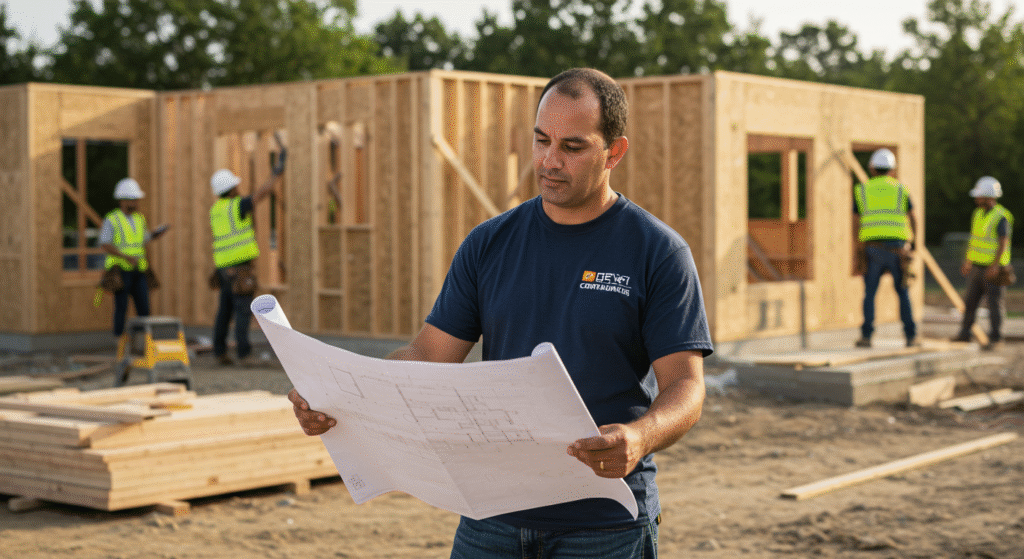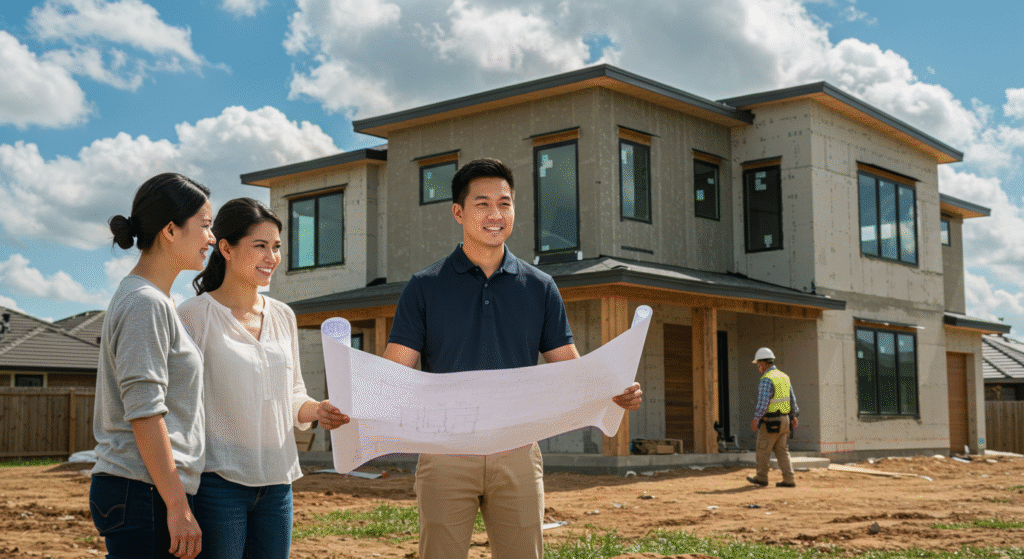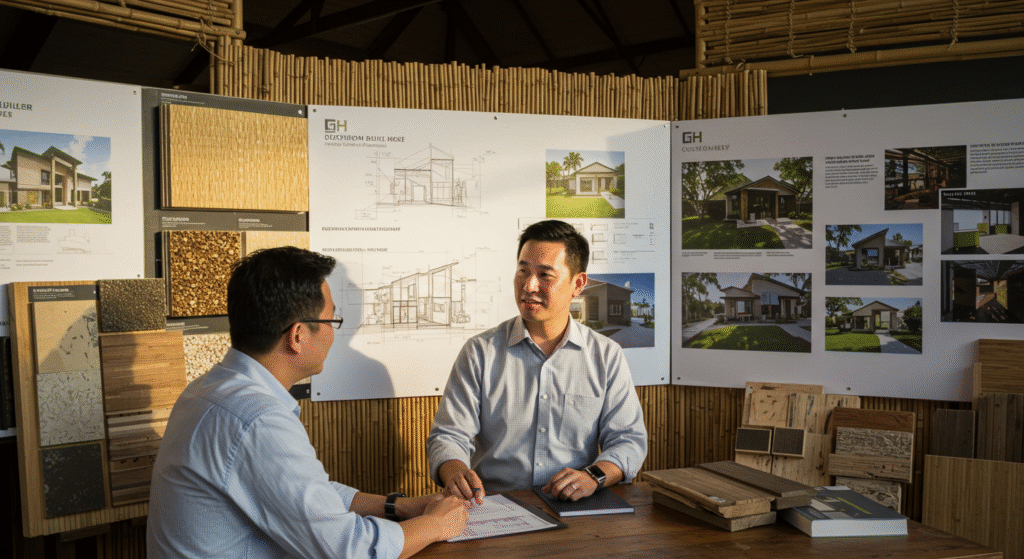The Role of a General Contractor: A Comprehensive Guide

General Contractor
Table of Contents
- Introduction to General Contractors
- 1.1. Definition and Overview
- 1.2. Evolution of the Role
- 1.3. Importance in Construction Projects
- Key Responsibilities and Duties
- 2.1. Project Planning and Coordination
- 2.2. Budgeting and Cost Management
- 2.3. Site Management and Supervision
- 2.4. Compliance with Regulations
- Types of General Contractors
- 3.1. Residential Contractors
- 3.2. Commercial Contractors
- 3.3. Industrial Contractors
- 3.4. Specialty Contractors
- The Process of Hiring a General Contractor
- 4.1. Defining Project Requirements
- 4.2. Researching and Shortlisting Candidates
- 4.3. Conducting Interviews and Evaluations
- 4.4. Negotiating Contracts and Agreements
- Quality Control and Assurance
- 5.1. Ensuring High Standards
- 5.2. Implementing QA/QC Programs
- 5.3. Conducting Regular Inspections
- 5.4. Addressing Defects and Improvements
- Safety and Regulatory Compliance
- 6.1. Adhering to Safety Protocols
- 6.2. Understanding Local Building Codes
- 6.3. Managing Permits and Approvals
- 6.4. Handling Incident Reporting
- Project Management Techniques
- 7.1. Agile Methodology
- 7.2. Waterfall Approach
- 7.3. Hybrid Models
- 7.4. Lean Construction Principles
- Sustainability and Green Building Practices
- 8.1. Incorporating Eco-Friendly Materials
- 8.2. Energy-Efficient Design
- 8.3. Water Conservation Techniques
- 8.4. Waste Management Strategies
- Case Studies and Real-World Examples
- 9.1. Residential Renovation Success
- 9.2. Commercial Building Development
- 9.3. Industrial Facility Construction
- 9.4. Lessons Learned from Past Projects
- Challenges and Future Trends
- 10.1. Common Obstacles in Construction
- 10.2. Impact of Emerging Technologies
- 10.3. Trends in Sustainable Construction
- 10.4. The Rise of BIM and Digital Tools
- Becoming a General Contractor
- 11.1. Educational Background
- 11.2. Gaining Necessary Experience
- 11.3. Obtaining Licenses and Certifications
- 11.4. Continuous Professional Development
- Legal and Financial Considerations
- 12.1. Contract Negotiation and Management
- 12.2. Insurance and Liability Coverage
- 12.3. Financial Planning and Risk Management
- 12.4. Tax and Accounting Considerations
- Client and Stakeholder Management
- 13.1. Effective Communication Strategies
- 13.2. Managing Client Expectations
- 13.3. Coordinating with Architects and Subcontractors
- 13.4. Resolving Disputes and Conflicts
- Conclusion
- 14.1. Summary of Key Points
- 14.2. The Evolving Role of General Contractors
- 14.3. Final Thoughts and Encouragement
1. Introduction to General Contractors

1.1. Definition and Overview
A general contractor is a professional responsible for overseeing construction projects from start to finish. They manage all aspects, including planning, budgeting, and site supervision, ensuring projects are completed efficiently and to the satisfaction of clients.
1.2. Evolution of the Role
The role of the general contractor has evolved significantly over the years, adapting to changes in construction techniques, materials, and regulations. From ancient builders to modern professionals, the core responsibilities have remained consistent, focusing on successful project delivery.
1.3. Importance in Construction Projects
General contractors are indispensable in construction projects, acting as the central point of coordination. They ensure that projects are executed according to plan, within budget, and to the required quality standards.
2. Key Responsibilities and Duties

2.1. Project Planning and Coordination
General contractors begin by understanding the project’s scope and objectives. They develop a detailed plan, outlining timelines, milestones, and resource allocation to ensure smooth execution.
2.2. Budgeting and Cost Management
Effective budgeting is crucial. Contractors estimate costs, allocate funds, and monitor expenditures to prevent overruns, ensuring the project stays financially viable.
2.3. Site Management and Supervision
On-site, general contractors oversee daily operations, managing workers, materials, and equipment. They ensure that work progresses as scheduled and meets quality expectations.
2.4. Compliance with Regulations
Adhering to local building codes, safety standards, and environmental regulations is a key duty. Contractors must obtain necessary permits and ensure all legal requirements are met.
3. Types of General Contractors

3.1. Residential Contractors
Specializing in home construction and renovation, these contractors focus on creating living spaces that are functional and aesthetically pleasing.
3.2. Commercial Contractors
Handling larger-scale projects like office buildings and retail spaces, commercial contractors manage complex designs and materials to meet business needs.
3.3. Industrial Contractors
These contractors work on factories, warehouses, and other industrial facilities, requiring expertise in heavy machinery and specialized construction techniques.
3.4. Specialty Contractors
Focusing on specific aspects like electrical, plumbing, or HVAC systems, these contractors provide specialized skills essential for project completion.
4. The Process of Hiring a General Contractor

4.1. Defining Project Requirements
Clearly defining the project’s scope, budget, and timeline is the first step in hiring the right contractor. This clarity helps in finding a contractor who can meet specific needs.
4.2. Researching and Shortlisting Candidates
Potential contractors should be researched based on their experience, reputation, and portfolio. Online reviews, referrals, and industry ratings are valuable resources.
4.3. Conducting Interviews and Evaluations
Interviews allow clients to assess a contractor’s communication skills, experience, and approach to project management. Evaluations of past work and client testimonials provide additional insights.
4.4. Negotiating Contracts and Agreements
A well-drafted contract is essential, outlining scope, payment terms, timelines, and responsibilities. Negotiation ensures both parties are aligned and agree on all terms.
5. Quality Control and Assurance

5.1. Ensuring High Standards
Quality control involves implementing measures to maintain high standards throughout the project. Regular inspections and adherence to best practices ensure workmanship and material quality.
5.2. Implementing QA/QC Programs
Quality assurance programs are systematic approaches to ensuring quality. They include audits, documentation, and continuous improvement practices.
5.3. Conducting Regular Inspections
Routine inspections by the contractor or third-party evaluators help identify and address any deficiencies early, preventing larger issues down the line.
5.4. Addressing Defects and Improvements
When defects are found, prompt action is necessary. Contractors should have a process for addressing and resolving issues to ensure final product quality.
6. Safety and Regulatory Compliance

6.1. Adhering to Safety Protocols
Safety is paramount. Contractors must enforce safety measures, provide protective equipment, and conduct regular training to prevent accidents and ensure a safe working environment.
6.2. Understanding Local Building Codes
Compliance with building codes and regulations is non-negotiable. Contractors must stay updated on local laws to avoid legal issues and ensure project approval.
6.3. Managing Permits and Approvals
Securing necessary permits and approvals is a contractor’s responsibility. Delays in this area can halt progress, so efficient management is crucial.
6.4. Handling Incident Reporting
In case of accidents or incidents, contractors must have protocols for reporting, investigating, and taking corrective actions to prevent future occurrences.
7. Project Management Techniques

7.1. Agile Methodology
Agile emphasizes flexibility and iterative progress, allowing for adaptability in dynamic project environments. It’s beneficial for projects with evolving requirements.
7.2. Waterfall Approach
The Waterfall method follows a sequential, phase-by-phase approach. It’s ideal for projects with well-defined scopes and minimal expected changes.
7.3. Hybrid Models
Combining Agile and Waterfall, hybrid models offer flexibility where needed while maintaining structure in stable areas, suiting projects with both predictable and unpredictable elements.
7.4. Lean Construction Principles
Lean focuses on minimizing waste and maximizing value. Techniques like Just-In-Time delivery and continuous improvement enhance efficiency and reduce costs.
8. Sustainability and Green Building Practices

8.1. Incorporating Eco-Friendly Materials
Using materials like recycled steel, bamboo, and low-VOC paints reduces environmental impact and promotes sustainability.
8.2. Energy-Efficient Design
Implementing energy-saving features such as solar panels, insulation, and energy-efficient HVAC systems reduces energy consumption and operational costs.
8.3. Water Conservation Techniques
Techniques include rainwater harvesting, greywater recycling, and low-flow fixtures to minimize water usage and protect resources.
8.4. Waste Management Strategies
Effective waste management involves recycling, reusing materials, and proper disposal to minimize environmental impact and comply with regulations.
9. Case Studies and Real-World Examples
9.1. Residential Renovation Success
A case study of a home renovation that was completed on time and budget, highlighting effective project management and client satisfaction.
9.2. Commercial Building Development
An example of a commercial project where innovative techniques and materials were used to achieve a modern, functional space that met the client’s needs.
9.3. Industrial Facility Construction
A detailed look at the construction of an industrial facility, emphasizing specialized skills and adherence to safety and quality standards.
9.4. Lessons Learned from Past Projects
Analyzing past projects to identify best practices and areas for improvement, providing insights for future endeavors.
10. Challenges and Future Trends
10.1. Common Obstacles in Construction
Delays, budget overruns, and labor shortages are frequent challenges. Understanding these helps in developing strategies to mitigate their impact.
10.2. Impact of Emerging Technologies
Technologies like BIM, drones, and 3D printing are transforming the construction industry, offering new tools for project management and execution.
10.3. Trends in Sustainable Construction
The increasing focus on sustainability is driving the adoption of green technologies and practices, shaping the future of construction.
10.4. The Rise of BIM and Digital Tools
Building Information Modeling (BIM) and other digital tools are enhancing design, planning, and collaboration, improving project outcomes and efficiency.
11. Becoming a General Contractor

11.1. Educational Background
While formal education isn’t always required, having a degree in construction management or a related field can provide a solid foundation for aspiring contractors.
11.2. Gaining Necessary Experience
Hands-on experience is crucial. Starting as a laborer or subcontractor provides valuable insights and skills necessary for managing larger projects.
11.3. Obtaining Licenses and Certifications
Licensing requirements vary by location, but obtaining certifications like OSHA certification can enhance credibility and demonstrate competence.
11.4. Continuous Professional Development
The construction industry is ever-evolving. Engaging in ongoing education and training helps contractors stay updated on new techniques, materials, and regulations.
12. Legal and Financial Considerations
12.1. Contract Negotiation and Management
A well-crafted contract protects both parties and ensures clear understanding of terms, reducing the risk of disputes.
12.2. Insurance and Liability Coverage
Adequate insurance coverage is essential to protect against potential risks and liabilities, providing financial security in case of unforeseen events.
12.3. Financial Planning and Risk Management
Effective financial planning involves budgeting, cash flow management, and contingency planning to handle unexpected expenses and risks.
12.4. Tax and Accounting Considerations
Understanding tax obligations and maintaining accurate financial records are vital for the financial health and legal compliance of a contracting business.
13. Client and Stakeholder Management

13.1. Effective Communication Strategies
Clear and consistent communication is key to managing client expectations and ensuring smooth project execution.
13.2. Managing Client Expectations
Setting realistic expectations and maintaining transparency helps in building trust and ensuring client satisfaction.
13.3. Coordinating with Architects and Subcontractors
Collaboration with other professionals is essential for integrating design, specialized skills, and ensuring all aspects of the project are cohesive.
13.4. Resolving Disputes and Conflicts
Having effective conflict resolution strategies is crucial for maintaining positive relationships and ensuring project success.
14. Conclusion
14.1. Summary of Key Points
The role of a general contractor is multifaceted, involving planning, budgeting, supervision, and compliance. By understanding the responsibilities, challenges, and future trends, contractors can effectively manage projects and deliver successful outcomes.
14.2. The Evolving Role of General Contractors
As the construction industry advances, the role of general contractors continues to evolve. Embracing new technologies and practices is essential for staying competitive and meeting the demands of modern projects.
14.3. Final Thoughts and Encouragement
For those aspiring to become general contractors, the field offers rewarding opportunities to contribute to the built environment. By pursuing education, gaining experience, and staying informed about industry trends, future contractors can achieve success and make a lasting impact.
Pingback: Construction Cost Estimation: A Comprehensive Guide